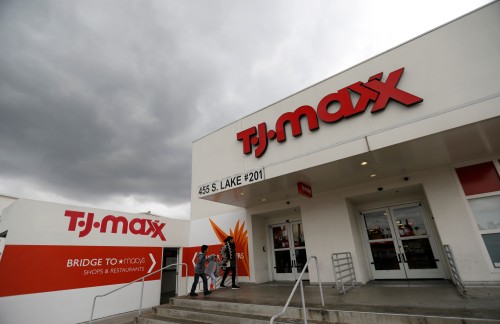By Timothy Aeppel
CHICAGO (Reuters) -For Matthew Prange, it’s easy to see why the inflation surge of the last two years has proven so difficult for the Federal Reserve to tame.
“When prices go up, it tends to stick,” said Prange, who oversees $3 billion worth of purchases of electronic parts, plastics, and metal as the top supply chain manager at Milwaukee Tool, a venerable Wisconsin toolmaker owned by Hong Kong-based Techtronic Industries Co.
The view among economists during the COVID-19 pandemic was that the burst of inflation was an inevitable result of the sudden increase in demand for goods by people stuck at home with plenty to spend. Global supply chains grew overwhelmed as they struggled to deliver.
But Prange said most of his supply chain had stabilized – meaning he was able to get most of what he needed – by the end of 2021. And yet the outsized price increases kept coming and, in some cases, he said, continue today.
Milwaukee Tool is among the companies, including Cummins Inc and Schneider Electric, gathered in Chicago this week at a Reuters Events supply chain conference. They described what they view as the slow and uneven decline of inflation, with some of them seeing the pace of price increases ease in one part of their business but continue to surge in others.
“One of the headwinds is inflation,” said Kevin Austin, the supply chain chief for Toyota Motor North America. He attributed the price pressures in part to pent-up demand, which remains strong in the auto industry even as the economy has slowed.
Inflation has fallen as the Fed has raised its benchmark overnight interest rate by 5 percentage points over the last 14 months – the fastest pace of rate hikes in four decades. The annual increase in U.S. consumer prices slowed to below 5% in April for the first time in two years.
Still, that and other measures of inflation tracked by the Fed remain well above the U.S. central bank’s 2% target. Data from the Philadelphia Fed on Thursday showed the path to lower inflation remains uneven: its monthly index of prices paid by manufacturers in its region rose for the second time in the past four months.
Meanwhile, the global supply chain snarls of the pandemic have diminished. The New York Fed’s Global Supply Chain Pressure Index ticked down to a reading of -1.32 in April, compared to a revised -1.15 in March. Negative readings point to pressures that are below the historical average.
“There’s still dislocation in global supply chains,” said George Koutsaftes, president and CEO of Honeywell Safety and Productivity Solutions.
But inflation pressures have moderated, he said. “And as we look 12 to 18 months out, we see it moderating even further.”
The challenge now is that factors that emerged in the pandemic have become endemic, Koutsaftes said. Labor shortages continue, for instance, and the rush to regionalize supply chains has increased demand for commodities in many parts of the world.
NOT A UNIFORM PICTURE
Economists attribute the persistence of relatively high inflation to factors beyond strained supply chains. The risks of long global pipelines for goods, which were highlighted by the pandemic, and growing geopolitical tensions – the war in Ukraine and a souring U.S.-China relationship – have sparked a rush to move production closer to end markets. Those new factories, however, are costly to build and the goods they produce come at a higher price.
Ken Engel, who manages the North American supply chain for Schneider Electric, a French electrical equipment maker, said he noticed a shift in attitude among customers over the last six months. He no longer hears from people desperate to find goods. Instead, they are asking when they will see lower prices.
But the picture is not uniform. “It differs by business,” Engel said. For instance, Schneider makes small circuit breakers widely used in residential construction, which has slowed under the weight of higher interest rates. By contrast, demand for the company’s “engineered-to-order” electrical parts to build data centers continues to boom.
“For the cloud providers” building those massive data centers, he said, “there’s been no slowdown.”
Much like Milwaukee Tool, Engel said Schneider’s North American factories have largely recovered from the shortages of the last few years. But supplies can still be spotty, which often means paying more for those scarce items.
“Our problem is our upstream suppliers,” such as firms that mold plastic parts, Engel said. In many cases, those suppliers have all the materials and machinery they need but lack the labor to produce enough to meet orders, he said.
Mario Guerendo, who oversees the global supply chain for Cummins, said one bright spot for the Columbus, Indiana-based engine maker has been rapidly falling shipping and logistics costs.
“It was crazy during COVID,” he said.
And yet, the same thing is not happening with many of the raw materials that the company buys. Steel prices, for instance, have eased but remain well above pre-pandemic levels.
“We’re also seeing it vary depending on geography,” he said.
(Reporting by Timothy Aeppel;Editing by Dan Burns and Paul Simao)











